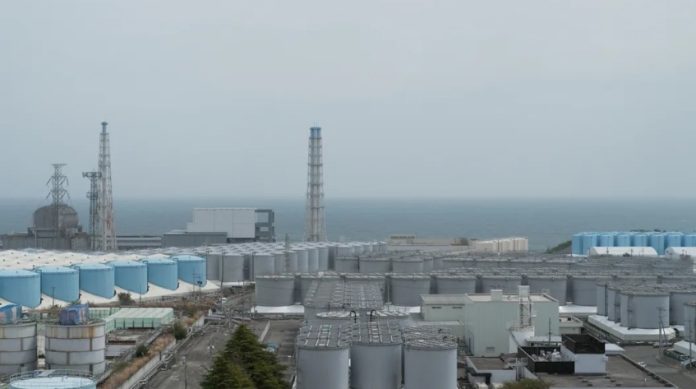The previously tsunami-hit Fukushima Daiichi nuclear power plant began a third discharge of treated and diluted radioactive wastewater into the sea on Thursday after Japanese authorities said the previous two discharges had been successful.
The plant operator discharged 7,800 tonnes of treated water in each of the first two batches and plans to discharge the same amount in the current batch by November 20.
Tokyo Electric Power Company Holdings (TEPCO) employees switched on the first of two pumps to dilute the treated water with more seawater and gradually channel it into the Pacific Ocean through an underwater tunnel for an offshore release.
The Chinese government, which strongly opposes the plan, warned Tuesday that it would take “all necessary measures” to protect the marine environment, food safety and public health.
The plant began its first discharge of wastewater in August. The process will continue for decades. The plant stores about 1.34 million tonnes of radioactive wastewater in 1,000 tanks. It has accumulated after the plant was knocked out by a powerful earthquake and tsunami that hit northeast Japan in 2011.
According to TEPCO officials, the tanks are almost full and the plan needs to be decommissioned, so the discharge of water into the sea is inevitable. After the first sewage discharge, hundreds of people protested in South Korea and neighbouring countries. China immediately banned all imports of Japanese seafood, causing serious damage to Japanese seafood producers and exporters.
Japan has set up a special aid fund to find new markets and reduce the financial impact of China’s seafood ban. Central and local governments have led the “Eat Fish and Support Fukushima” campaign, which many consumers have now joined.
TEPCO and the government say the process is not causing any environmental damage, but some scientists believe the ongoing release is unprecedented and must be carefully monitored. The water is treated to remove as much radioactive material as possible and then significantly diluted with seawater before being released.
So far, results from seawater samples taken by TEPCO and the government have detected tritium, which they say cannot be detected with existing technology, at levels much lower than the World Health Organisation (WHO) standard for drinking water. Other nuclear power plants around the world, including in China, South Korea and the US, use similar processes to treat cooling water, and after such filtration, water containing tritium also ends up in the oceans.
Recently, two plant workers were splashed with radioactive waste while cleaning pipework at the water treatment plant and were hospitalised for radiation exposure.
The International Atomic Energy Agency concluded that the release, if carried out as planned, would have a negligible impact on the environment, marine life and human health. Representatives of the IAEA mission said last month that they were reassured by the fact that everything had gone smoothly so far.
